How Oakley came to be accused of ‘fascism’ for selling Thin Blue Line sunglasses
Oakley has grown from a niche action sports brand to the all-but-official shades of the right wing and police, Josh Marcus writes

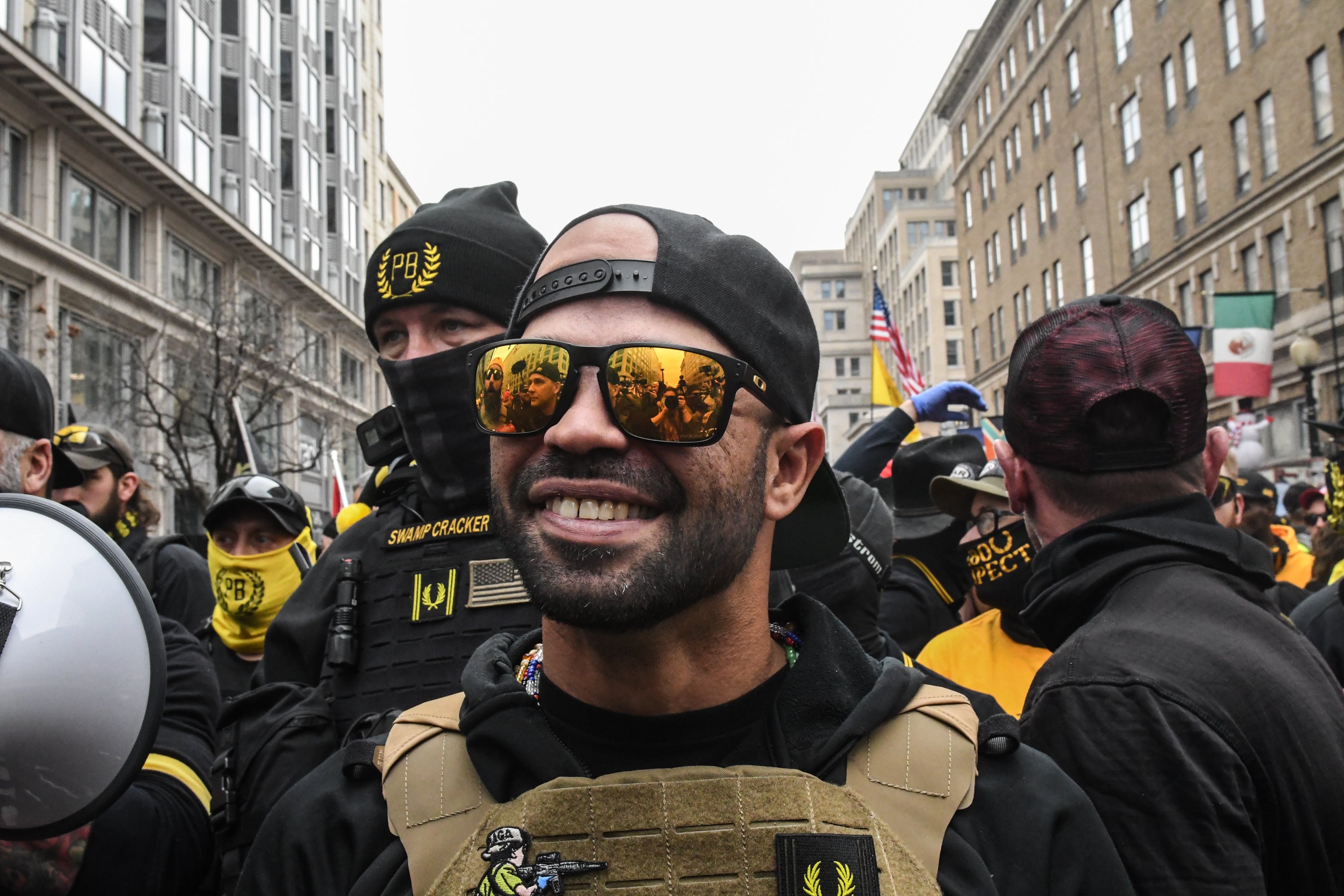
Your support helps us to tell the story
From reproductive rights to climate change to Big Tech, The Independent is on the ground when the story is developing. Whether it's investigating the financials of Elon Musk's pro-Trump PAC or producing our latest documentary, 'The A Word', which shines a light on the American women fighting for reproductive rights, we know how important it is to parse out the facts from the messaging.
At such a critical moment in US history, we need reporters on the ground. Your donation allows us to keep sending journalists to speak to both sides of the story.
The Independent is trusted by Americans across the entire political spectrum. And unlike many other quality news outlets, we choose not to lock Americans out of our reporting and analysis with paywalls. We believe quality journalism should be available to everyone, paid for by those who can afford it.
Your support makes all the difference.In the last few years, if you have come face-to-face with a police officer in riot gear at a Black Lives Matter protest, a masked militia man with a big gun outside a statehouse, or an in-your-face, flag-waving Trump supporter, there is a decent chance they are wearing Oakley sunglasses.
The futuristic shades have become a fashion shorthand for a wider set of identities and their associated politics, just like the Patagonia puffer vests of the San Francisco tech elite, or the canvas Carhartt jackets of blue collar Midwesterners and the hipsters who imitate them. For Oakley, this symbolism is a long time coming.
Colin Baden, CEO of Oakley until 2015, remembers a trade show in the 1990s in Southern California. A rival brand put up a sign that said, “Cops wear Oakleys,” thinking it would damage the company’s standing among the region’s massive (and lucrative) surf market, not a group known for its excessive fondness for law enforcement.
“We thought that was great,” Mr Baden told The Independent. “We made our own signs that said cops wear Oakleys, and we had cops wearing Oakleys. It was very well received. It’s a great legacy. If you want to see how good your eyewear is, put it on the battlefield and see how good it is.”
Now, the company has taken this association with law enforcement into overdrive. As the Black Lives Matter movement and its critique of racist policing came to the fore, the brand began selling sunglasses featuring the thin blue line, a highly controversial law enforcement symbol.
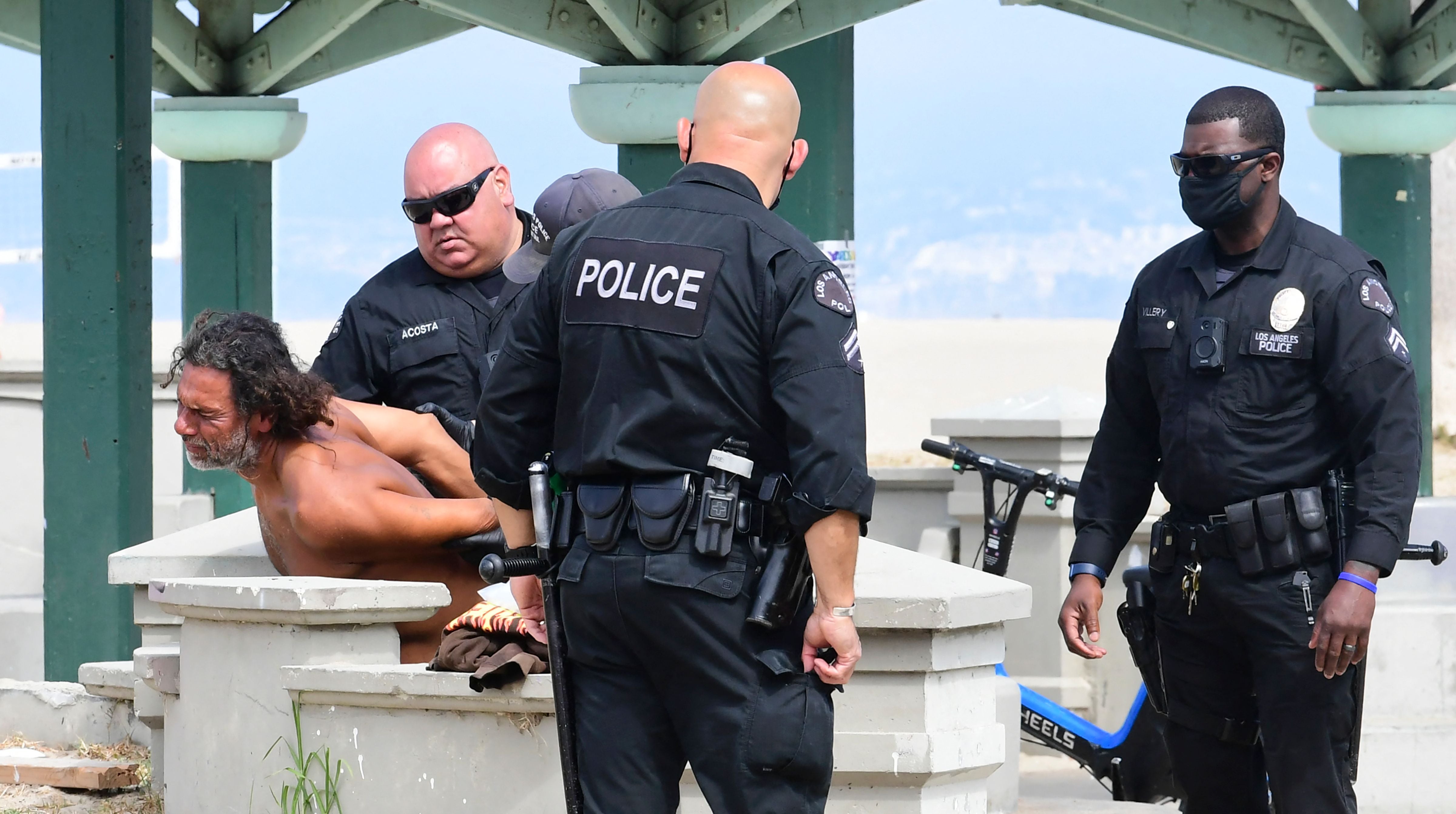
The line, a royal-blue stripe across a black background or American flag, is seen by some as a benign representation of supporting law enforcement. For others, it’s a white supremacist and fascist dog whistle, a sign that the police are getting more violent and more racist, and that the violent racists are acting more like police.
Fashion is always in conversation with culture around it. According to fashion historians, activists, and designers, wearing Oakleys, and especially those with a thin blue line, is now at the heart of a debate about racism, politics, and the meaning of policing itself.
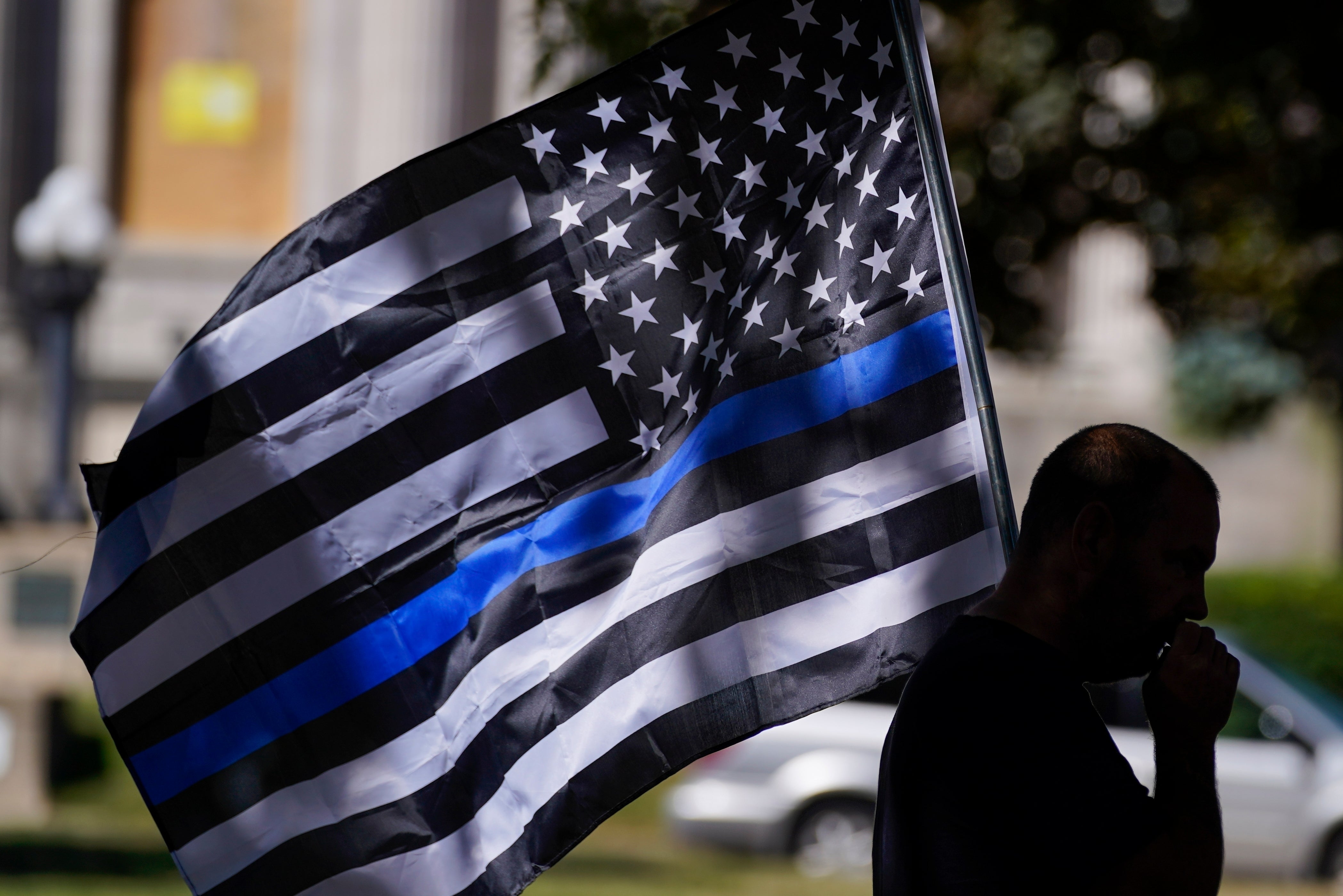
Beginning around 2018, Oakley launched the Thin Blue Line Collection, which features sunglasses, bags, and a military-style patch, all featuring the insignia. The collection, originally part of Oakley’s Standard Issue sub-brand for active and retired military and law enforcement, is now available all over the web, including on Amazon.
“Keeping our communities safe, our law enforcement professionals hold the line in preservation of peace,” the company writes on a page for the collection.
Oakley declined to participate in this article, but those who have studied the line of sunglasses have widely diverging views on what it means for a top US brand to throw in its lot with the thin blue line.
Mr Baden, the former Oakley boss, said the brand has a long relationship with law enforcement, who are “great pillars of the community,” so a symbol honouring them is perfectly appropriate.
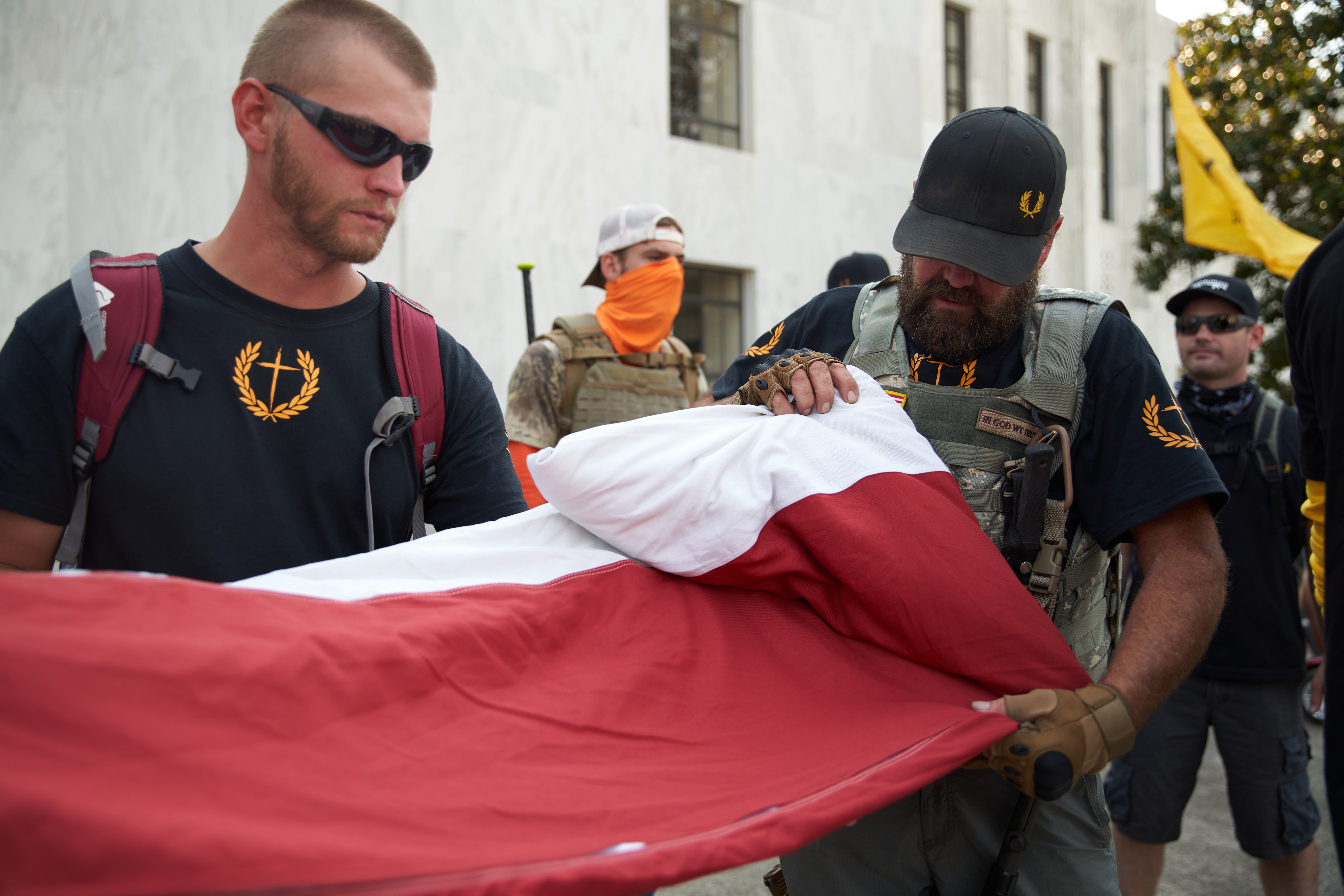
“I can certainly see why people in our country can be polarized about what’s transpired in the last few years. I’m more of a unifier than a polarizer. I think about all the good things that come from first responders,” he said.
“If there’s some iconography that gives them a place in the community, that generally on a good day tells a good story, I’m less likely to get polarized about it,” he added. “They do a lot for communities around the world. I’m sure there’s some bad apples, but by and large, this is a good thing to reinforce a connection with.”
For those who have encountered a few of those bad apple police officers, or believe the whole tree is rotten, a major brand embracing the thin blue line is horrifying.
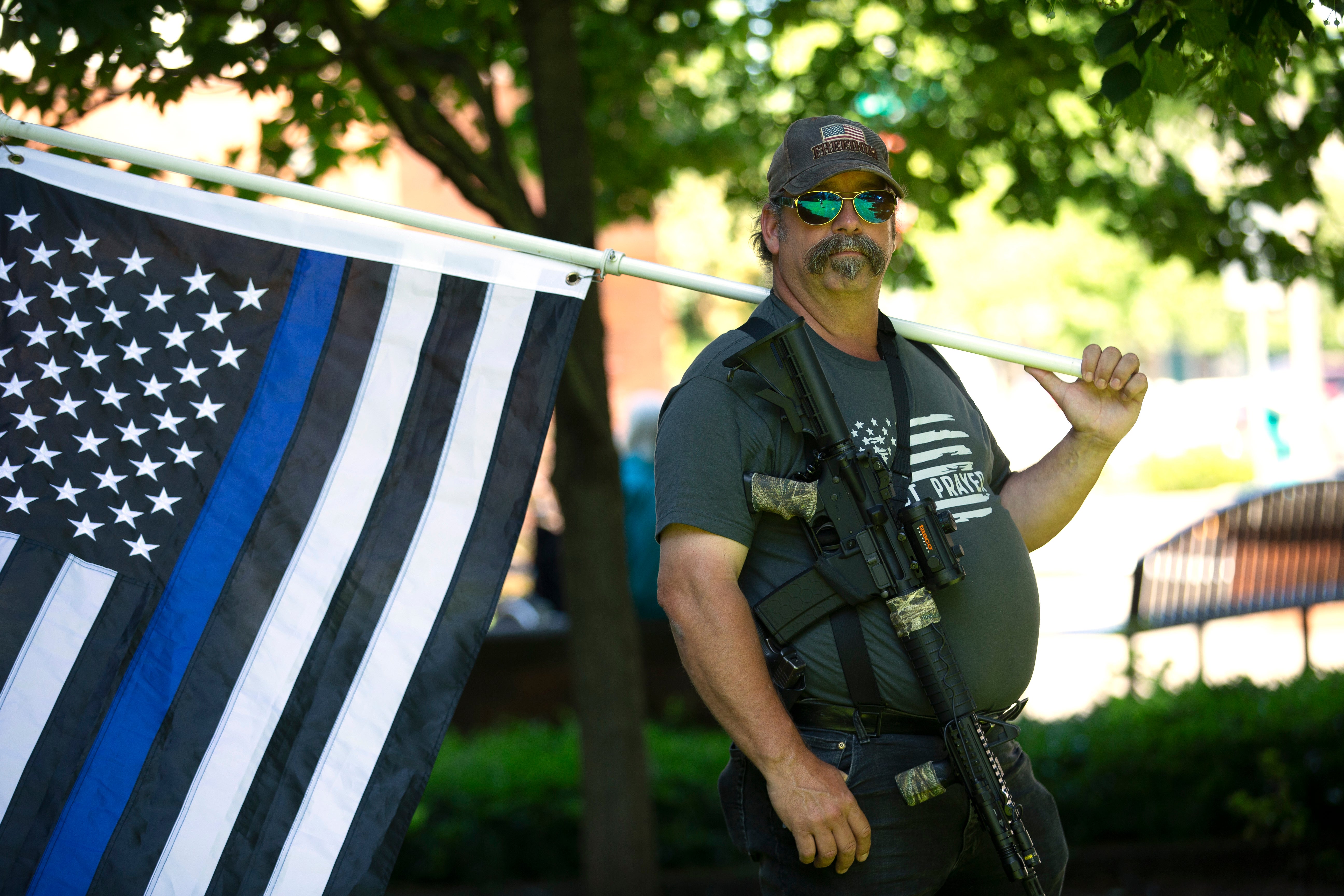
Mac Smiff is a Portland-based racial justice organiser and journalist. He says the symbol started appearing right around the rise of Black Lives Matter and Donald Trump, and has an inherently “fascist” message because of the company it keeps. Right-wing militia members and racist Proud Boy street fighters frequently carry thin blue line gear, he said.
“That symbology was often used as a way for counter-protesters, for folks who said they were there in support of police, when in reality they were just there for violence and conflict. That’s really my experience with it,” he said.
He’s not surprised Oakley would adopt that logo as its own.
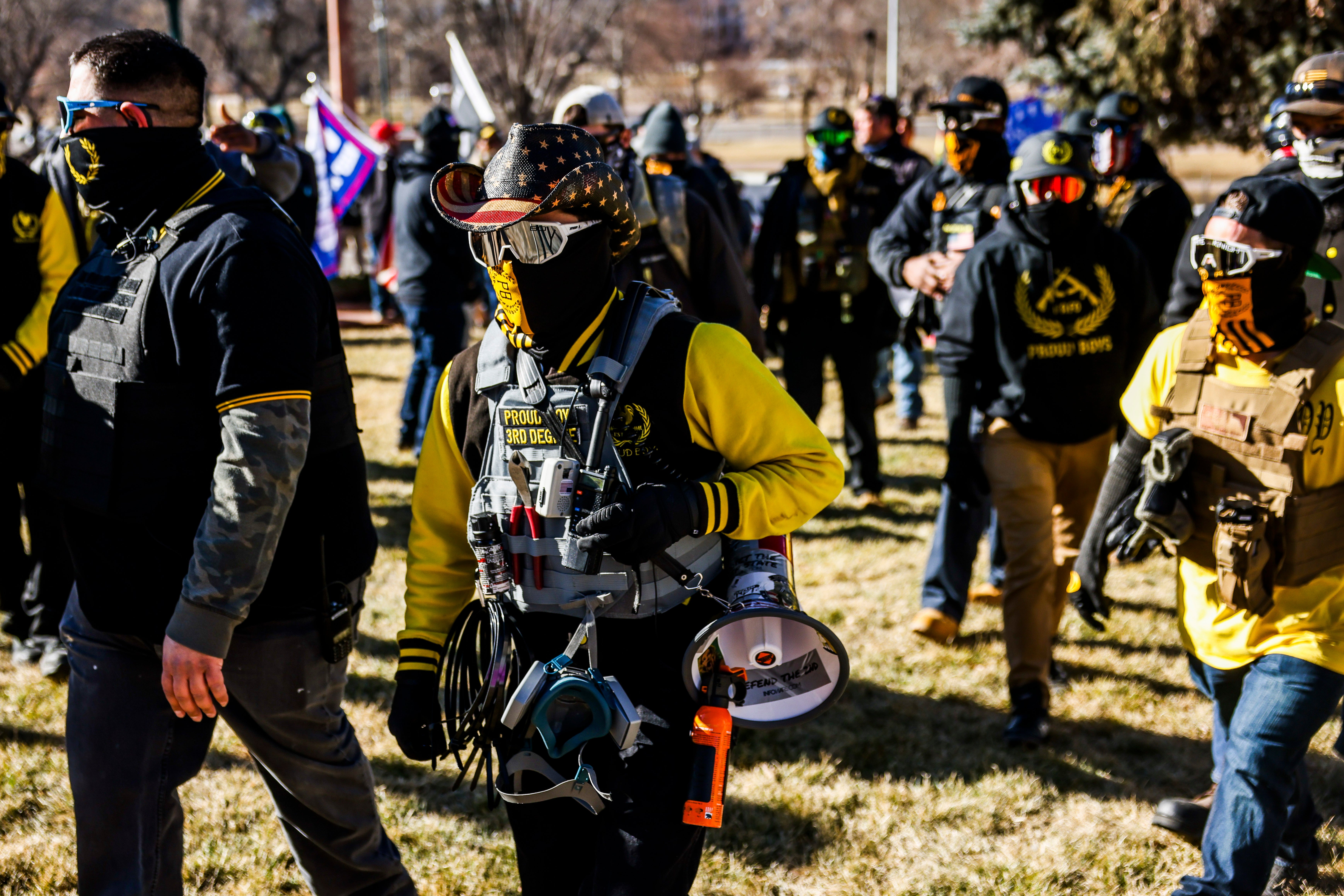
“It’s Oakley,” he added. “That’s what the cops wear. I’m not terribly surprised. It’s pretty gross. That’s pretty stomach-churning to see that they would put out something of that sort.”
The Blue Line has a long and tangled history. Some trace its origins back to a famous “thin red line” battle formation used by British troops in the Crimean War in the 19th century, which was later heralded in art and popular culture.
The concept later migrated to policing and the US, with law enforcement leaders in cities like New York and Los Angeles in the early and mid-1900s touting the idea of the “thin blue line.” Among its proponents were New York police commissioner Richard Enright, whose department in 1920s struggled with widespread corruption during the Prohibition era, and Los Angeles police chief William Park, who said immigrants were “not far removed from the wild tribes of Mexico” and called Black people who rioted against police brutality in 1965 “monkeys in a zoo.”
The concept of the thin blue line got even more popular, ironically, after the release of the 1988 Errol Morris documentary of the same name, about an innocent man sent to death row for the murder of a police officer.
But it was only in 2014 that the concept was primed to hit the mainstream. College student Andrew Jacob had seen the thin blue line before, but decided to transpose it onto a black-and-white American flag. The idea came after watching Black Lives Matter protests against the killings of Eric Garner, Michael Brown and Tamir Rice, as well as attending the funeral of a police officer killed in his hometown in Michigan.
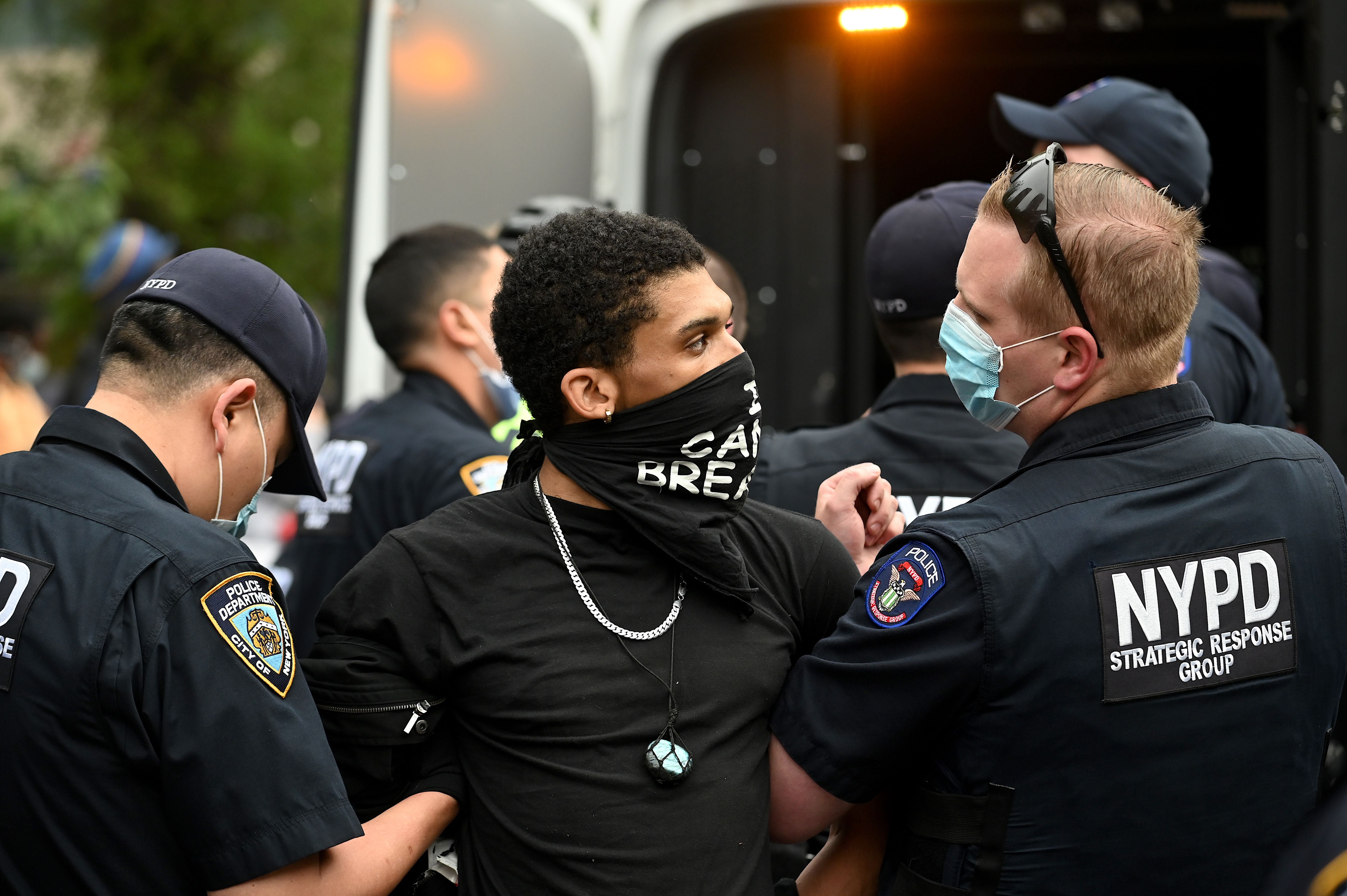
Mr Jacob now runs Thin Blue Line USA, a successful online retailer of pro-police gear. He has said the symbol has no association with hate.
“The flag has no association with racism, hatred, bigotry,” he told The Marshall Project. “It’s a flag to show support for law enforcement — no politics involved.”
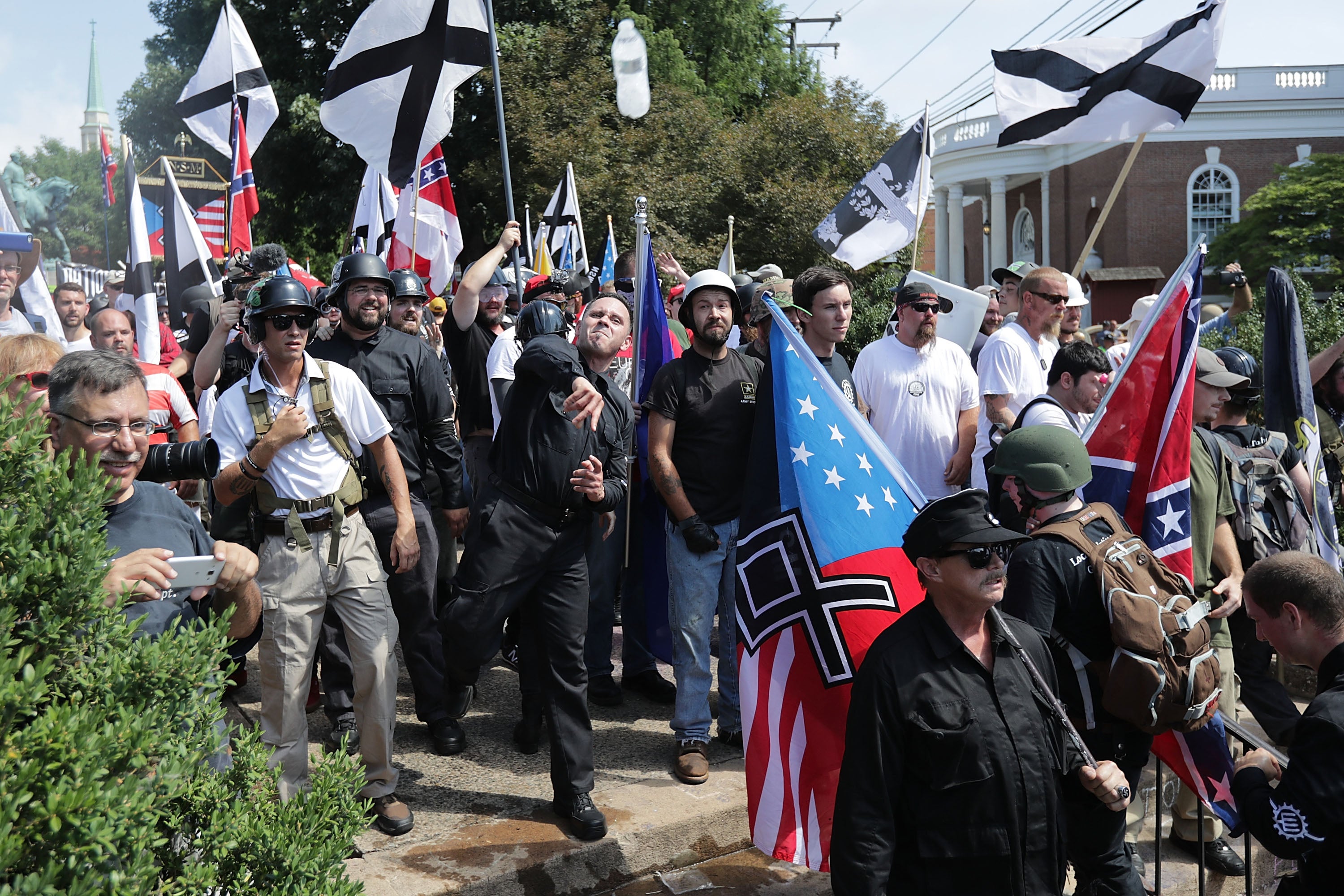
But the thin blue line’s recent history would suggest otherwise.
In addition to police departments across the US andCanada, the symbol has been donned by shadowy riot police, Charlottesville neo-Nazis, 6 January rioters, and police accused of killing innocent Black people. In the chaotic new culture wars around race and policing and politics in the US, fashion has been at the forefront, from white nationalists in khakis at Charlottesville, to blaring red MAGA hats, to Boogaloo Boys in Hawaiian shirts. Whatever it was originally intended to mean, for a substantial number of people, the thin blue line is a symbol that accompanies a particular brand of right-wing street violence.
The federal agents who appeared, without badges or service insignias, to crack down on the 2020 George Floyd protests? They were photographed in thin blue line regalia, as well as some in Oakley shades.
After a Portland-area courthouse was burned down during that same summer, a police officer reportedly made a commemorative challenge coin featuring the thin blue line, the phrase “Remember the Alamo,” as well as a secret acronym, “NPNBW,” whose meaning sheriff’s office investigators say they are stil unable to determine.
After a white police officer shot Daunte White, a young Black man, during a traffic stop in Brooklyn Center, Minnesota, officers hoisted a thin blue line flag above their precinct, which soon became the site of violent clashes between riot police and largely peaceful anti-racist demonstrators.
On the campaign trail during that chaotic 2020 season, Donald Trump took to replacing the American flag with the thin blue line flag at rallies, as he railed on about the “left-wing war on cops.”
The same thin blue line that appears on Oakley’s glasses is often overlaid on a Punisher skull logo. The graphic, which comes from a 1970s Marvel comic about a former Marine turned vigilante, was more recently popularised by Chris Kyle, a US Navy sniper lionised in the film American Sniper, who became a right-wing celebrity for his numerous confirmed kills during the War on Terror. Sometimes, it’s all mixed with a Trump face as well.
The thin blue line also frequently represents Blue Lives Matter, a law enforcement movement about honouring dead officers, which sounds conspicuously like a rebuke to the idea that Black Lives Matter.
So naturally, by the time 6 January, 2021, rolled around, mixed in among the Trump flags, American flags, neo-Nazi and militia insignias of those storming the US Capitol and brawling with police officers, were numerous thin blue line flags.
Oakley means plenty of things to plenty of people outside of politics, and it’s not the only brand using the thin blue line — gun maker Sig Sauer, perhaps even more on the nose, sells a thin blue line-branded pistol directly to police — but sunglasses have a particular cultural power and cache.
According to Vanessa Brown, a senior lecturer at the Nottingham School of Art & Design and author of 2015’s Cool Shades – the History and Meaning of Sunglasses, modern sunglasses have always been tied to men in the military, to high-tech gear, to danger and masculine bravado.
They first began being commercialised after WWI, with companies touting the association between high-tech eyewear and aviators, motorcyclists, soldiers, and police officers.
Oakley, she said, takes this one step further. The company, which got its start supplying extreme athletes high-performance optics, is known for a “cyborg” aesthetic, with bizarre, high-tech shapes and impenetrable performance optical lenses, sometimes in a reflective, bug-eye shade of orange or green.
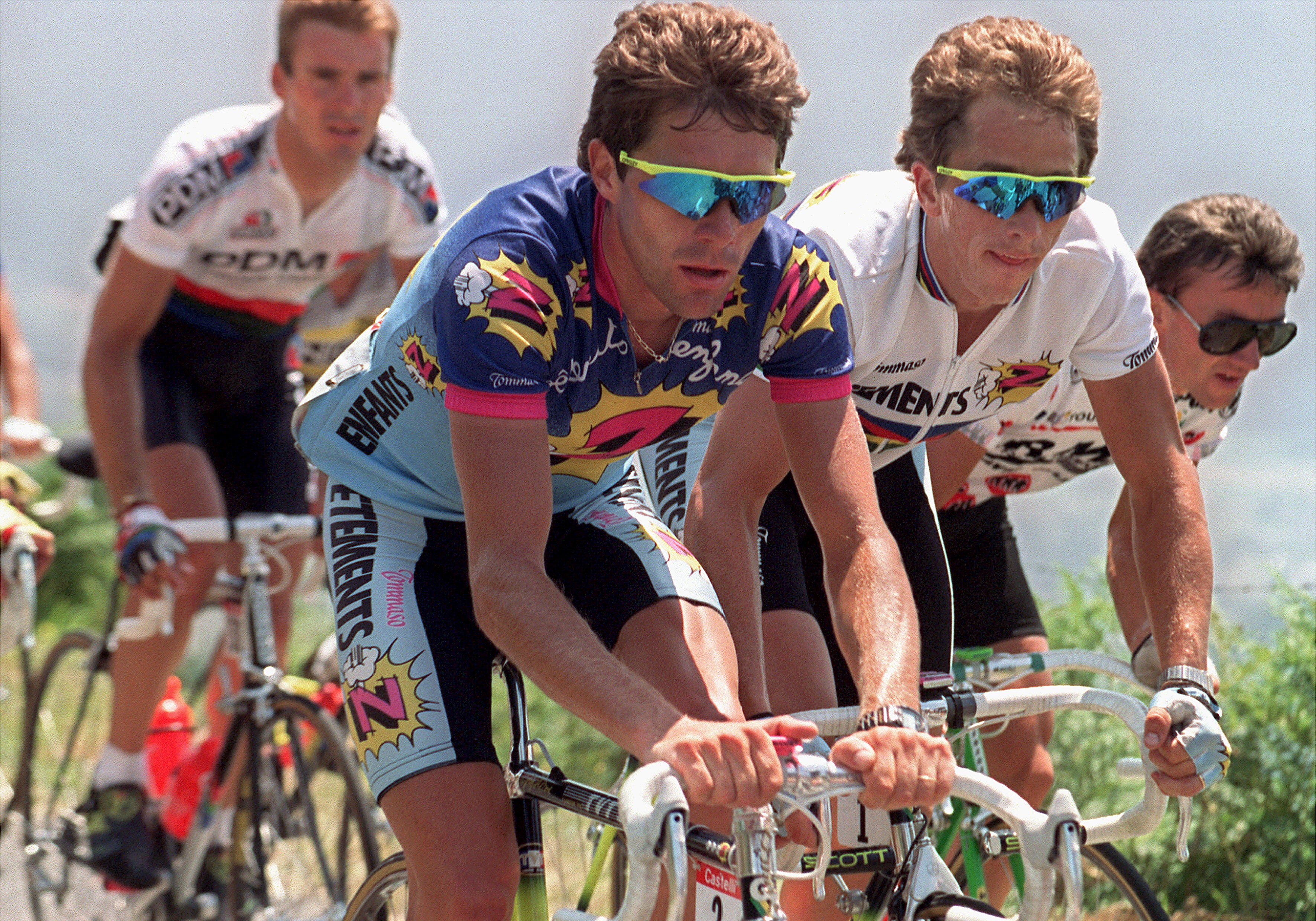
“It’s a very extreme form of masculine preparedness,” she said. They remind her of the Alien movies. She pointed out, with a laugh, how the brand has at times promoted its glasses being made from a comic book-esque material called Unobtainium.
Digging into the archives, Oakley has always been flirting with an ideology and aesthetic that valorizes a kind of dystopian soldier archetype.
Its headquarters in Orange County looks like a post-apocalyptic fortress.
Its products have always had extreme, militaristic names and adverts: the Time Bomb Watch, the Flak Jacket sunglasses, shades that offer “thermonuclear protection.”
Jim Jannard, the billionaire founder of Oakley, was a former biker and is a known sci-fi, military, and apocalypse obsessive.
His sprawling estate, which covered a whole island in northern Washington, reportedly had a Land Rover with replica machine guns, and a tank-like vehicle from the film Judge Dredd, about a dystopian police officer who acts as judge, jury, and executioner. Mr Jannard met Mr Baden when the founder was looking for an architect to build him a house inspired by the film Blade Runner, about a bounty hunter ex-cop who kills sentient androids in a grim future cityscape.
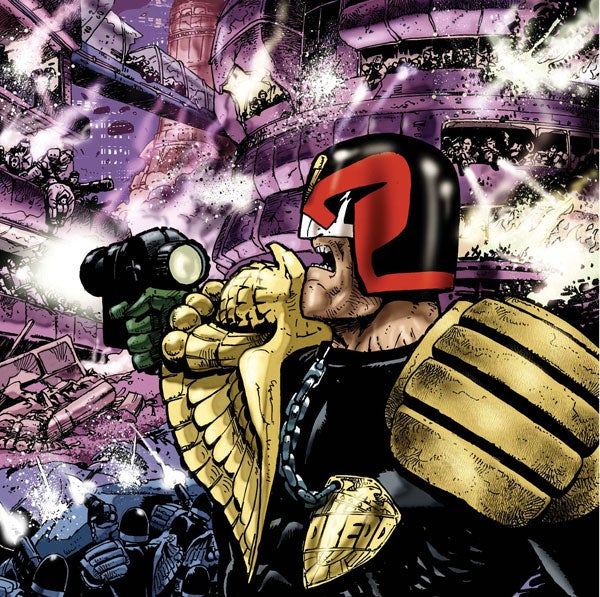
The reclusive Oakley founder rarely gives interviews, but has portrayed himself as an apolitical “mad scientist,” intent not on wading into politics, but on making the most high-tech, forward-thinking gear imaginable.
“I’m not Bill Gates,” he told the Los Angeles Times in 1997. “And I’m not Ted Turner.”
The company has been working with the military since the 1980s. Mr Baden said he always viewed them the same way as the elite cyclists and track runners who helped make Oakleys popular. This relationship became especially high-profile after 9/11.

“I don’t think it’s any different when you think about the professional sports world, when you think about the elite military forces, and definitely the first responders. Who’s the best in the business? What are they wearing? What are they using?” he said. “Guys in Delta Force and the [US Navy] SEALs could tell that our stuff had really great optics, you could provide a level of ballistic protection. You’d see guys riding around on quads wearing Patagonia jackets and Oakley eyewear, and it’s because it works.”
There’s money to be made and prestige to be had by aligning with the toughest, deadliest guys on the planet. The Hummer began its life as the military Humvee, before becoming an iconic American consumer SUV. The same goes for many Oakley products.
"We’re hoping that the success of the U.S. military in Iraq helps sales of the products,” Mr Baden told CNN in 2003.
Now, the company is hoping that same logic will help it sell police-themed sunglasses.
To people like Gregory McKelvey, a Portland-based political consultant who has frequently helped organise racial justice demonstrations, this marketing strategy is an explicitly racist one.

“To me, it’s only a reaction to Black Lives Matter,” he said. “It’s racist. The way that especially white America views crime, if you ask an average blue lives matter person, especially an average, honest white American, middle of the road, to envision a criminal, they’re envisioning the type of people who we see being murdered by the police and protest for.”
The symbol’s use exploded as the movement grew in prominence, and it’s frequently deployed in a way that’s not-so-subtly about race, he argues. Oregon has a strong libertarian streak, as well as numerous full-blown anti-government militia groups, and yet nominal supporters of these same ideals seem enamoured with the police and the thin blue line, the ultimate symbol of government power.
“I’ve seen cars with a Blue Lives Matter flag on one side, and another one that says ‘Come and take it,’ about their guns. Who do you think is going to come and take it? The police are,” he said.
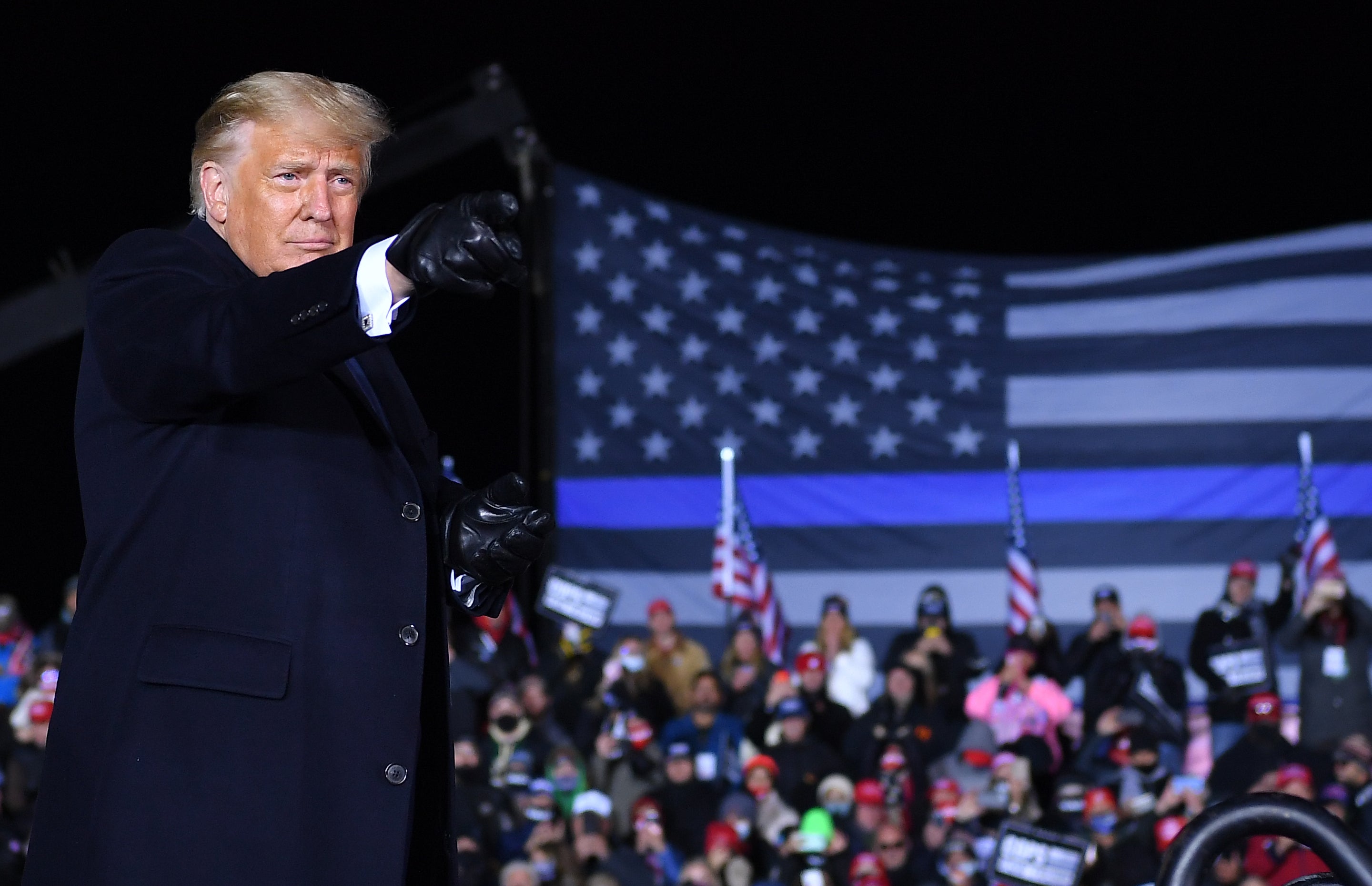
Mr McKelvey, who himself is a person of colour, joked that he’s thought about putting a thin blue line sticker on his car so he doesn’t get pulled over.
Backing the police is never apolitical, Mr Smiff, the journalist and organiser, says. He points to the historical origins of law enforcement in many places, where early police forces were used to catch runaway slaves, attack Native Americans, and bust union activity in big cities.
“That is what the thin blue line really is,” he said.
Mr Baden is adamant that Oakleys and the thin blue line aren’t racist, and he’s skeptical of those who think all police are racist and want to burn the system down.

“You can see how that played out,” he said, an apparent reference to the rioting that took place amid larger peaceful demonstrations in 2020 against police brutality.
Still, many are concerned that the thin blue line-ification of Oakleys is representative of a darker cultural phenomenon, where police, and sympathetic conservative white men more broadly, see themselves as an embattled minority who needs to take back their power.
In many ways, police have all the power in the world — massive budgets despite low crime clearance rates, lethal weapons, qualified immunity, police “bill of rights” laws, powerful unions — and yet some argue they’re acting like a transgressive subculture.
“I think that this is important and significant,” said Ms Brown, the fashion expert. The police, with symbols like thin blue line glasses, are trying to recreate a kind of “subcultural cool,” the way disempowered or minority groups often use fashion to establish their own autonomy and dignity.
“If you present yourself as a minority that is under threat in some way and needs to defend itself and protect itself, it kind of gives a contemporary credence to your argument, and that’s quite coterminous with a lot of things that right-wing groups are saying, and the way they speak about their identity in their place in wider society currently,” she added.
Graphic artist and essayist Nate Powell argued in the 2019 piece About Face that this part of a wider aesthetic and cultural shift, as veterans returned from unpopular conflicts in the War on Terror, and the external-facing jingoism and racism of those years curdled into a domestic crisis where “aggrieved, insecure white americans with an exaggerated sense of sovereignty have officially declared their existence as above the law, constituent with a long tradition of acting and living above it.”
Blacked-out, lifted trucks, Punisher skulls, street police armed with weapons of war, cyborg Oakleys — they all form a part of a new aesthetic identity among white men that normalises “a paramilitary, proto-fascist presence.”
“There’s a surface masculinization of every detail and accessory, black becoming the clear color of choice to pair with those sweet wraparound Oakleys: unknowable, devoid of identifying characteristics, a man-child’s unaccountable extension of power,” he writes.
Ultimately, the debate around Oakley’s glasses, and the thin blue line symbol, is a perfect stand-in for the ongoing debate around policing in the US. There are those who see police as a neutral force for good, stopping crime and protecting communities.
Then there are those who point to law enforcement’s racist roots, its disproportionate violence against communities of colour, and what NYU’s Brennan Center has described in a recent report as the “unbroken chain of law enforcement involvement in violent, organized racist activity right up to the present,” including moonlighting with hate groups like the KKK.
However one feels about the police, and pro-police iconography, it’s clear that the thin blue line has completed its cultural ascendance. Once big corporations start betting on a symbol, it’s officially mainstream, argues Ms Brown, the fashion researcher.
“What you do see with brands, especially the big ones, is that they’re pretty risk averse,” she said. “They are not going to reflect the desires and needs of people who are politically niche or considered to be odd.”
The Thin Blue line, in other words, isn’t so thin anymore.
Join our commenting forum
Join thought-provoking conversations, follow other Independent readers and see their replies
Comments